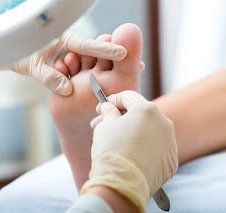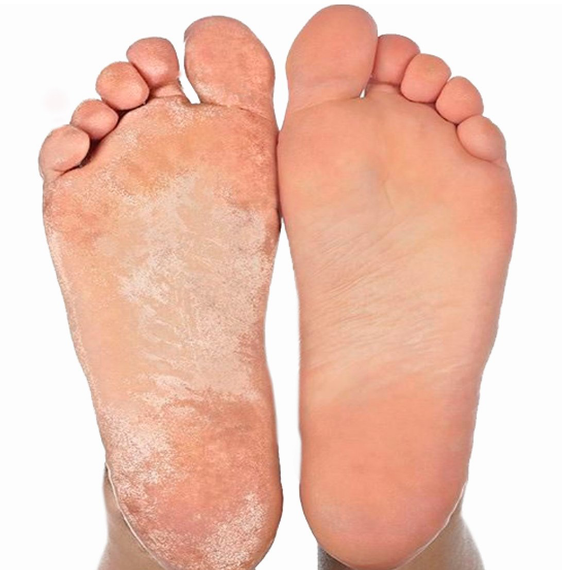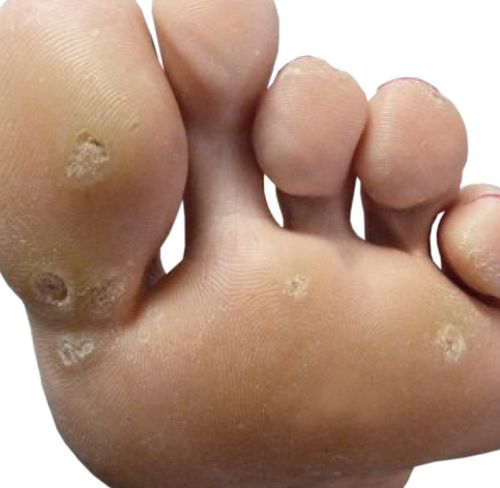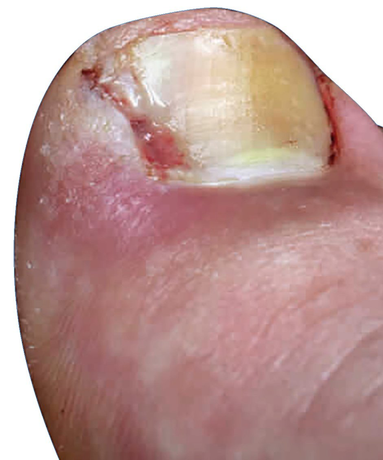
ROUTINE NAIL CARE
Many people struggle to cut or file their own toenails and so prefer the services of a professional podiatrist, especially as incorrect nail cutting can lead to infection or possibly an ingrown toenail.
People's nails may be thickened due to trauma or ill - fitting footwear. As a result the nail-bed may become damaged and the nails require drilling. This treatment procedure reduces the nail thickness to make the toe nails more comfortable in footwear and prevent rubbing when wearing shoes.
Many patients like to have routine nail care every 6-8 weeks
to keep their feet in good order and make them feel as though they are walking on air! Half hour routine care appointments range from £50 each
and can include off loading the foot with padding for comfort, treatment for corns and callus, and for verrucas using acids. Follow up appointments (price ranges from £44 ) may be required for verruca treatment as they usually require more than one treatment.
ROUTINE NAILCARE
Prices from: £50 for routine nail care (includes corns, callus, verrucas).

CALLUS
Callus is hard skin present on weight bearing areas on the foot. They are very common on the forefoot or ball of the foot, the outer sides of the big toes and the heels. It can feel like walking on a stone or pebble when having callus on the feet. They can be removed safely by the use of a scalpel. The treatment is pain free and this service is available from Footnote Podiatry.
CORNS
Corns are caused by friction and pressure. They are found on pressure points on and around the foot. They can be on the top of the joints of the toes, in between the digits of the toes and underneath on the ball or forefoot as well as the heels. They are treated painlessly using a surgical scalpel. There are different types of corns depending on where they are located on the foot.
SEED CORNS
These are hard in texture, called heloma mille, and are superficial to the surface of the skin often found on the plantar or the underside of the foot and are usually in groups rather than one alone.
INTERDIGITAL CORNS
These are softer in texture and are called heloma molle or interdigital corns. As the name suggests they are located in between the toe spaces/digits and are usually softer in touch when treating.
All corns have a white nucleus. They are usually covered in hard skin or callus so the callus is removed to reveal the corn. Having a corn is described as like walking on a sharp small stone or marble.
The difference between a corn and a verruca is that with a corn the striations in the foot pass through the corn but with a verucca they go round the edge.

VERRUCAS
Human papilloma virus or the common name verrucas, are very easy to acquire as they can be passed onto another person through standing on wet moist environments. Walking on floors of swimming pools or gym changing rooms are classic places to pick up this virus. They are highly contagious and can be caused by a compromised immune system and also stress. They can be present in children and adults alike and can be treated with topical treatments for example salicylic acid. Using this method of treatment usually requires more than one treatment, and can achieve successful results. An active verruca usually has tiny black dots which can usually be seen with the naked eye. These black dots are tiny active blood vessels. These are keeping the verruca alive so potentially the verruca has its own blood supply and treating them will help to eradicate the virus therefore making the verruca non-active.
MOSIAC VERRUCAS
This describes clusters or groups of verrucas.
They may need more serious treatments such as cryotherapy, freezing the verrucas, or the use of a hot laser.
VERRUCA TREATMENT
Prices: Initial assessment and treatment £50 and follow up appointments prices from £44 since verrucas may require more than one treatment.

INGROWN TOE NAILS -CAUSES and TREATMENT
An ingrown toenail is usually caused by a sharp spike of nail growing into the skin beside it. This can happen for various reasons such as not trimming your nails correctly, wearing poorly-fitting shoes or tight socks, and sweating a lot (during exercise, for example) or a sports injury can all contribute. Shoes which force the toes towards each other encourage the nail to grow into the skin. Ingrown toenails may occur more often in people who have nails which are deformed in some way. Often there is no apparent reason why it occurs.
When a spike of nail pierces the skin of the toe, it allows the germs that are normally harmlessly present on the skin to get underneath the skin and cause infection.
Early on, the skin around the ingrown nail may become reddened and feel slightly tender. If it progresses and becomes infected, it may become more swollen, red and painful. If the infection gets worse, there may be some fluid (pus) oozing from around the nail. Ingrown toenail pus is usually yellow or green. The nail will become even more painful and there may be an overgrowth of skin around it.
If the infection is getting worse, you may have a throbbing pain, redness spreading over the toe, or a high temperature (fever).
For persistent ingrown toenails so It may be necessary to remove part of the nail - SPECIALISED NAIL SURGERY. The usual procedure is as follows:
- The toe is made numb and painless by injecting local anaesthetic into the base of the toe on both sides
- The toenail is then cut with scissors vertically a few millimetres in from the offending edge.
- It is cut right up to the base of the toenail and the offending edge can then be pulled out.
- A small amount of acid (called phenol) is often applied onto the exposed part of the nail bed. This helps to stop the edge of nail re growing and causing another ingrown nail.
- The nail is then dressed.
Once the anaesthetic wears off, the toe may be sore so you may need mild painkillers such as paracetamol for a day or so. You will probably have to wear a dressing for a week. Changing this every week for at least three to four weeks to allow the wound to heal.. During this time you will not be able to have a bath or go swimming. You also will not be able to do any strenuous exercise, such as running. After the operation, the nail will regrow but will be narrower than before, but without the spike of nail that was once present.
